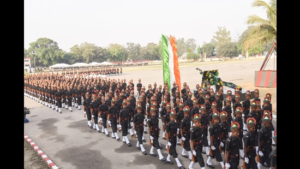Anti-junta resistance forces in Myanmar have registered a string of military victories since they launched a coordinated offensive near the border with China last month, putting tremendous pressure on the State Administration Council, which has ruled the country since the coup of February 2021. The offensive, named Operation 1027 after the date when it started, was initiated by an alliance of three resistance groups in Shan State, and their successes led to similar campaigns in several other parts of Myanmar. Since the weekend, several People’s Defence Force groups and ethnic resistance organisations have carried out attacks on military camps and trade routes in Chin and Kachin States and Sagaing Region, which border India. The fighters, using drones and resorting to asymmetric warfare, have taken control of towns and military camps near the only two official border crossings with India, leading to the exodus of thousands of Myanmar citizens and dozens of military personnel to Mizoram. The UN has said that about 90,000 people have been displaced by the intensified fighting. Significantly, the resistance groups have set aside ethnic divisions and past political affiliations – some were earlier aligned with the junta — to take on Myanmar’s military. Their operations appear to be aimed at gaining control of key military positions and trade routes with China and India. While border trade with India remains small, the rebels have taken control of Chinshwehaw, a key route for $1.8-billion in annual trade with China. Scores of military and police personnel have surrendered at several locations while others have abandoned their positions.

This has only increased pressure on the junta, which has resorted to devastating air strikes at several places that have resulted in civilian casualties. Beijing has confirmed Chinese casualties and dispatched assistant foreign minister Nong Rong to Myanmar last week to discuss ways to maintain stability on the border.
The Indian side is reluctant to criticise the Tatmadaw (armed forces) because of fears of pushing Myanmar closer to China as well as security concerns related to anti-India militant groups from the northeastern states that have bases in the neighbouring country. India participated in a ceremony held last month to mark the eighth anniversary of the junta’s 2015 ceasefire agreement with ethnic rebel groups, but it is clear the pact is coming apart. The repercussions for India’s Northeast could be ominous if the civil war in Myanmar continues.





